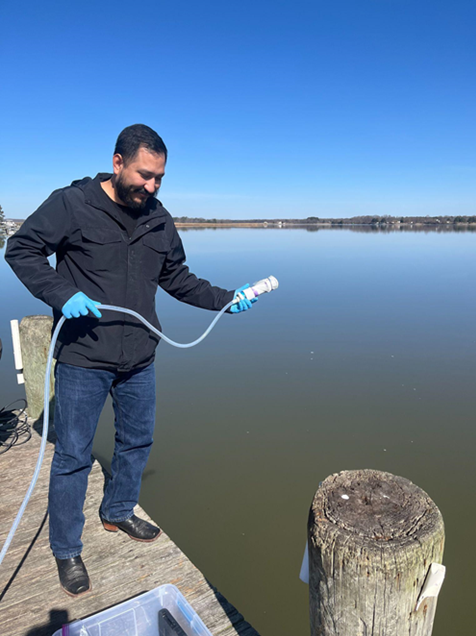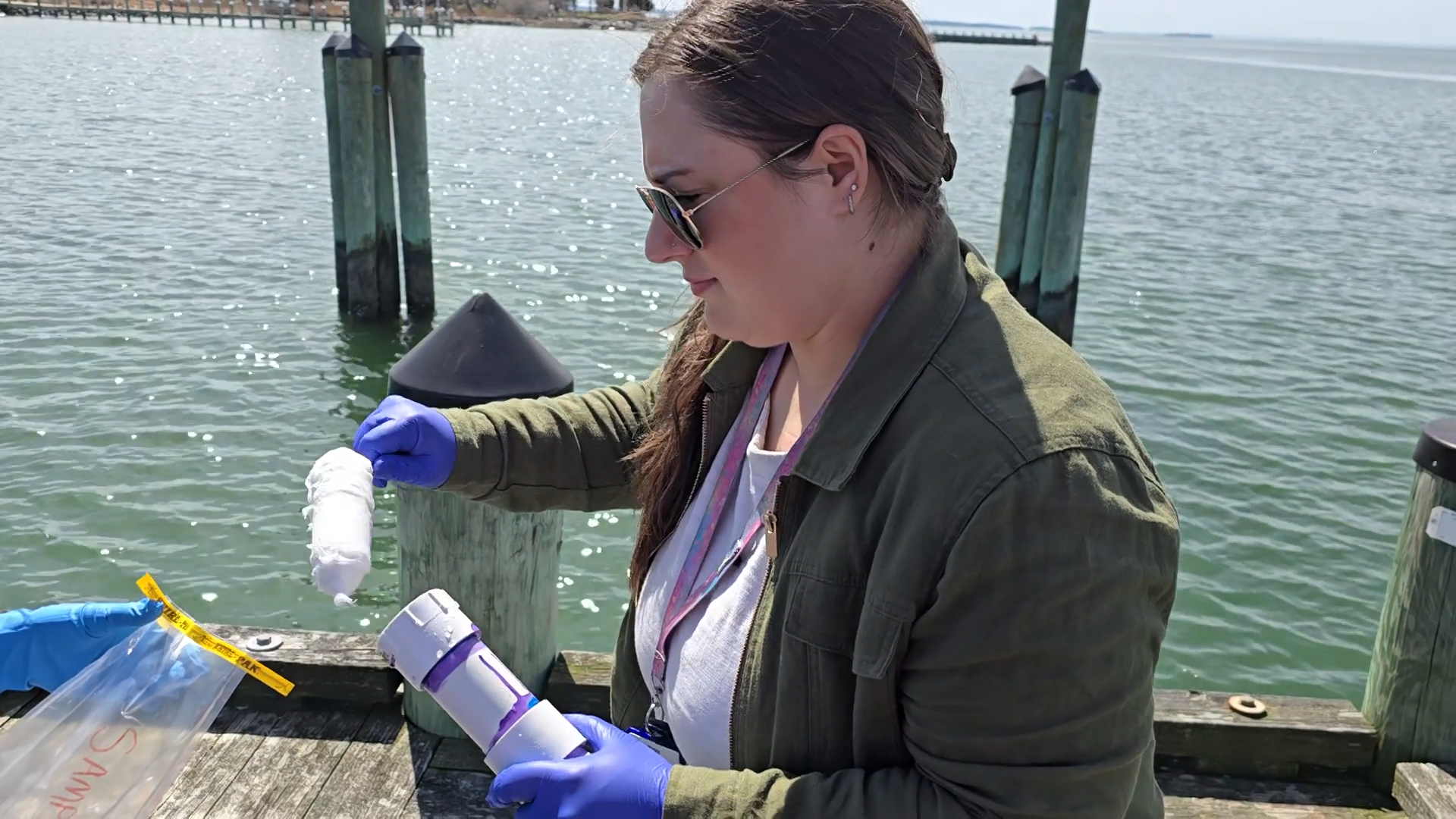
NCCOS researchers have begun investigating whether a method used by the U.S. Food and Drug Administration (FDA) to detect Salmonella bacteria in the environment could also be used to detect Vibrio bacteria.
Vibrio occur naturally in U.S. coastal waters, but thrive primarily in estuaries during warm months, and some species and strains can be harmful to human health. While most Vibrio infections, usually contracted by eating contaminated seafood or exposing open wounds to Vibrio-laden water, result in only mild to moderate gastrointestinal illness, a small number of cases are more serious and can be fatal.
Some Vibrio infections do occur in cooler months, and it is these cold-tolerant Vibrio strains and their potential virulence that researchers want to learn more about, but sampling for Vibrio in cold water is difficult.
Working on the Maryland side of Chesapeake Bay last month, the researchers used the “modified Moore swab” technique to sample water at Tuckahoe Creek and the Choptank River. The simple materials deployed for the sampling — a roll of sterilized cheesecloth inside a PVC pipe connected to a water pump — could offer an effective and inexpensive way to monitor Vibrio in cold water.
Standard water sampling methods in cold water often don’t capture enough Vibrio that can be cultured and investigated in the lab. However, the pump-driven “modified Moore swab” technique can pass up to 10 liters of water through the swab, and initial results show that this allows the swab to trap enough Vibrio to produce an accurate assessment of which species and strains are present and in what proportions. NCCOS and FDA are mutually interested in this information since different species and strains have different potentials for virulence.
Sampling data will also help inform and refine NOAA’s Vibrio forecasts, an assortment of predictive models and weather-related tools used by public health officials around the nation, primarily to ensure that shellfish are safe to harvest for human consumption. NCCOS developed the model used to generate the Vibrio vulnificus forecast for Chesapeake Bay.
NCCOS’ Vibrio monitoring and forecasting work supports the National Coastal Monitoring Act and the Oceans and Human Health Act.

